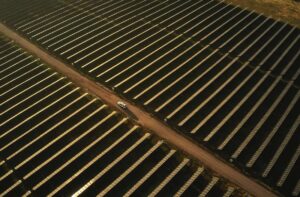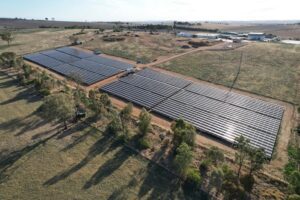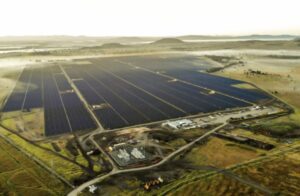GE, the world’s biggest industrial group and the largest supplier of energy machinery, says the world no longer needs to rely on so-called “synchronous” generation provided by coal and gas plants to ensure the stability and reliability of electricity grids.
“The days of relying solely on synchronous generation for everything are over,” says Nick Miller, senior technical director for GE Energy Consulting, adding that alternatives such as inverter-linked solar can perform many of the same functions, and much more efficiently.

This is significant, particularly in Australia where a massive political debate, and media debate, has erupted over how much variable renewable energy such as wind and solar should be allowed into the system, and whether it will impact on reliability and grid security.
But the debate is not just political. The CSIRO and the network owners envisage a future based around solar, wind and storage, and little or no “synchronous” generation from coal and gas, and this vision was supported by chief scientist Alan Finkel, who pointed to the numerous technology alternatives already available.
However, the fossil fuel lobby and the conservative institutions that manage the grid operations and its rules – the Australian Energy Markets Operator and the Australian Energy Markets Commission – warn of increased disruption if synchronous generation (coal and gas plants) is replaced by renewables. They struggle to imagine a future with no large spinning machines, and AEMO’s chairman Tony Marxsen insists that alternatives are years or even decades away.
GE’s Miller, however, supports Finkel’s view that technologies are readily available to perform the functions that many presume can only be delivered by fossil fuel generators.
He points to a new 300MW solar PV plant in California, which was connected recently with GE inverters and delivered frequency response “many times as fast and accurate” as thermal synchronous generators on the same grid.
In Texas, he says, all wind turbines are required to provide primary frequency response.
“Their markets are being adapted to make sure that every technology – wind, solar, energy storage – can participate and get paid for providing services that keep the grid stable and secure. The days of relying solely on the synchronous generation for everything are over.”
That situation has not yet arrived in Australia. Promoters of battery storage, inverter technology and other “smarts” are trying to get rules changed so they no longer favour incumbent fossil fuel generators – setting the price of electricity every 5 minutes instead of every 30 minutes (and so favouring fast response technology) is key among them.
But these changes are being fought vigorously by the owners of gas and diesel generators who profit from the status quo, even though the principal regulator and the market operator agree that they distort the market at the expense of consumers.
“The good news is that inverter connected technologies like wind and solar can provide some excellent grid support services. A key objective is to improve performance standards and get greater participation from the whole system,” Miller says.
“We’ve built our grids around synchronous generation which has good and bad properties, but we’ve gotten used to it for 100 years. We’ve now got rapidly rising levels of increasingly sophisticated asynchronous technologies. While they have their good and bad features, the trick is to take advantage of all of these technologies.
“Every technology can contribute – you have to keep re-looking at the rules to build a modern energy system.”
Miller says storage will likely be one of the technologies to assist in grid stability “but by no means is it the only – or even the main – option.
“The first thing we need is to make better use of what we already have. We need flexibility in the grid – that means physical flexibility and rules flexibility. There will be situations at the extremes of grid conditions where storage may be the best answer.
“For example, batteries provide some unique, quick ancillary services. They are being used to provide some specific grid services because they do them very well. These uses are quite tailored.
“We are far from the penetration and equipment prices that warrant large-scale energy storage for backup and massive shifting of generation from hours of plenty to hours of scarcity. There are niches today, where it makes sense, and we need to keep thinking and looking.”
Behind the meter – in homes and businesses – may be different because where there are high retail prices, battery storage is already likely to make sense. “There is a lot of debate in the industry about whether this is, in the holistic sense, the most economic direction to go. Time will tell.”
Miller said he was not in a position to comment directly on the recent state-wide blackout in South Australia.
“What I can tell you from my experience throughout the US, including places like Texas, is that it has been demonstrated that highly satisfactory levels of stability are regularly achieved in grids with a high penetration of renewable energy.
“The behaviour of the grid changes, and you may need to run it differently – in other words, it may need new rules and approaches. But technology has moved forward a long way, and grids like Texas has evolved their operating rules to take advantage of what renewable generation can do for grid stability, with great results.”







